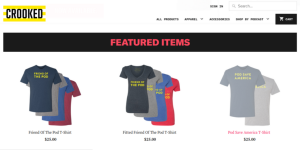
Asking for product feedback on Twitter is becoming in vogue among high-profile CEOs. Last Christmas evening, for example, Airbnb CEO Brian Chesky tweeted, “If Airbnb could launch anything in 2017, what would it be?” He then took the time to respond to thousands of messages.
If @Airbnb could launch anything in 2017, what would it be?
— Brian Chesky (@bchesky) December 26, 2016
Inspired by Chesky’s move, Twitter and Square CEO Jack Dorsey asked his followers to share improvements they’d like to see on Twitter. He received thousand responses in just a few hours.
Following in the footsteps of Brian Chesky: what’s the most important thing you want to see Twitter improve or create in 2017? #Twitter2017
— jack (@jack) December 29, 2016
“We’ll consider everything we heard from you,” Dorsey said in a follow-up tweet. “Not going to ship all of it, but will be more transparent about why and what we learned.”
Tesla’s Elon Musk is also active on Twitter. In one recent example, a Tesla user complained that other users were using charging stations as parking lots. Musk responded to the user, promising to take action. Just six days after, the company tweaked its policy to directly address the issue.
Loic Le Meur, the Tesla user who tweeted Musk, was so impressed with his experience that he wrote a blog post about it. “Elon listens, answers personally and makes changes at an incredible speed,” Le Meur writes. “That is one of the reasons [Elon Musk] is so successful.”
Social media listening has emerged as a legitimate and timely way of gathering customer feedback—and successful business leaders seem to be catching on. CEOs like Chesky understand that to continue to drive business results, they need to close the gap between their brand and their users.
Asking for feedback on Twitter is a very public way for business leaders of saying, “We’re here, and we’re ready to listen.” But is it the best way to harness feedback?
If you’re a business leader and want to follow the lead of these CEOs, it’s critical to know and consider the drawbacks.
The risks of asking for feedback on social media
Gathering customer feedback through social media results to a few important problems.
1. Excluding the majority of your customers
Social media amplifies the opinions of a few. In fact, 85 percent of social media updates come from just 29 percent of a company’s social media audience. You’re not hearing from a broad representative of customers. A feature or product that’s highly requested on social media may not be something that a majority of your customers really want or need. If you’re going to ask for product ideas on social media, validate what you hear with other customer intelligence tools to hear from a broader range of consumers.
2. Lacking deep context
You don’t really know the person behind the tweet. In most cases, social media profiles aren’t always complete. Are they a current customer, for example? How much do they spend with you, and what are their past preferences and attitudes?
That type of information isn’t readily available on social media. Sometimes, people don’t even reveal their real names on Twitter. Because you have limited to no information about the customer behind the tweet, you don’t have the complete picture.
3. Hijacking your conversations
From a competitive standpoint, social media engagement is problematic.
Chesky, for instance, ended up revealing features that Airbnb is still working on. Depending on your industry, telling the world what’s on your product roadmap may not be a smart move. At the very least, agile competitors could follow responses, copy ideas and beat you to the market with user-requested features. More competitors could also actively go after customers who aren’t 100 percent happy with your products and services.
4. Missing ways to build an authentic relationship
The biggest issue is that social media isn’t the right avenue for ongoing customer intelligence. Asking for customer feedback on social media can get messy really quickly. Chesky’s question, for instance, got more than 2,000 responses in a matter of hours. With an overwhelming number of responses, organizing feedback in a way that’s useful to key stakeholders in your company might get challenging and time-consuming.
More importantly, when you ask for feedback on social media, it’s often hard to close the feedback loop. It’s hard to let the person know that his or her input shaped your company’s decisions beyond a generic “thank you.” And if you want to follow-up with specific segments of your customers, you can’t do that on social media because it’s not robust enough for that level of engagement.
Start with social media—but don’t stop there
Acting on social media responses is risky because you’re not getting a complete picture of customer behavior and preferences. For the reasons I’ve outlined above, social media listening lacks real context, which makes it an insufficient source of customer intelligence.
To transform customer feedback into a competitive advantage, dig deeper. True collaboration with customers requires more than just the manual collection of feedback. Social media shows that you’re open to customer feedback, but you should take it further and use tools that will allow you to validate ideas with wider range of customers.
More importantly, prioritize building an authentic relationship with your customers—one that’s built on mutual value. Create a lasting sense of community where customers see that they have an impact on your decisions. Build on what you already know about your customers, and deliver on what they want over and over again.
The time for ongoing engagement is now
I applaud Chesky, Musk and Dorsey for being open to user feedback. We’re in an age where disruption is happening all the time. Staying ahead of the competition requires getting closer to customers. Today, execs need to have a direct, two-way connection with customers so they can be confident in their products, marketing campaigns and customer experience initiatives.
Social media is a good starting point to get a pulse on your customers. But more than ever, you need ongoing and a more robust customer intelligence strategy to boost value for customers and, ultimately, drive results for the business.
Digital & Social Articles on Business 2 Community
(83)
Report Post








